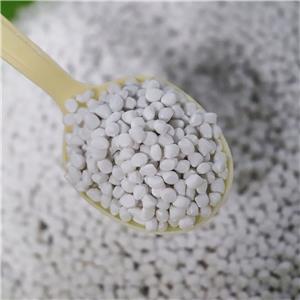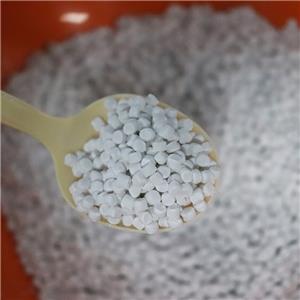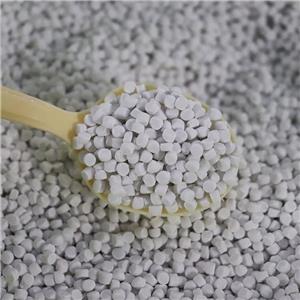Nano-calcium carbonate is commonly used in 10 categories of surface modifiers
There are two defects in the direct application of nano-calcium carbonate in organic polymer matrix:
First, intermolecular force, electrostatic action, hydrogen bond, oxygen bridge, etc. cause the agglomeration of calcium carbonate powder;
Second, the surface of nano-calcium carbonate has a strong hydrophilic and strongly alkaline hydroxyl group, which will make its affinity with the polymer poor, easy to form agglomerates, resulting in uneven dispersion in the polymer, resulting in the interface defect between the two materials, and can not reflect the nano effect of nano-calcium carbonate.
With the continuous expansion of the application field of nano-calcium carbonate, these shortcomings are more obvious. In order to give full play to the advantages of nano-calcium carbonate and improve the performance of nano-calcium carbonate, different surface modification methods and modifiers must be used for surface modification treatment.
The commonly used modifiers of nano-calcium carbonate mainly include coupling agents, surfactants, polymers, inorganic substances, etc.
1, titanate coupling agent
Titanate coupling agent can be divided into monoalkoxy type, coordination type and chelate type. In order to improve the homogeneity of the reaction, it is necessary to dissolve and dilute with inert solvent, and then add the surface modification machine in the form of spray to better disperse mixing and surface chemical coating with calcium carbonate particles.
Titanate modification effect is good, has been widely used, but titanate brown affect the whiteness of the modified product, and the price is more expensive, and may harm human health (lead to liver cancer).
2, aluminate coupling agent
The alkoxy group at one end of aluminate can react with free protons on the surface of calcium carbonate, and the other end can produce entangling or cross-linking with polymer molecular chains, which is superior to titanate.
Calcium carbonate modified by aluminate can be better dispersed in organic media, mechanical properties are improved, and physical mechanical properties and processing properties of products can be improved, and it is widely used in filled plastics and other products.
The advantages of aluminate are: light color, non-toxic, high temperature of thermal decomposition, low price, convenient packaging and transportation, so a wide range of applications. The disadvantage of aluminate is that it is easy to hydrolyze and can not be used in wet surface modification process.
3, borate ester coupling agent
As a modifier, borate coupling agent has many advantages: non-toxic and antibacterial, excellent coupling function, good thermal stability, and good hydrolysis resistance. Therefore, as a nano calcium carbonate modifier, borate can be used not only for dry surface modification process, but also for wet modification process.
4. Fatty acids (salt)
The action mechanism of fatty acid (salt) is that a large number of hydrophilic hydroxyl groups are distributed on the surface of calcium carbonate, showing strong alkaline characteristics. Its RCOO- reacts with Ca2+, CaHCO3+, CaOH+ and other components in calcium carbonate slurry to generate fatty acid calcium precipitate, which is coated on the surface of calcium carbonate particles. The surface properties of calcium carbonate change from hydrophilic to lipophilic due to the hydrocarbon groups in fatty acid calcium.
The dispersion of nano-calcium carbonate was improved by fatty acid modification, and it had good compatibility with organic polymer materials. Calcium carbonate modified with fatty acid (salt) is mainly used to fill PVC plastics, cable materials, adhesives, inks, coatings and so on. Among them, stearic acid (salt) is the most commonly used and very cheap surface modifier for calcium carbonate.
5. Phosphate and condensed phosphoric acid
Phosphate (salt) modifier is also an anionic surfactant, mainly through phosphate corrosion of calcium carbonate surface to produce calcium phosphate and calcium hydrogen phosphate, which are tightly coated on the surface of nano-calcium carbonate particles, long chain alkyl arrayed outward, so that nano-calcium carbonate is hydrophobic.
The application of nano-calcium carbonate modified by phosphate ester in composite materials can not only improve the processing and mechanical properties of the materials, but also improve the acid resistance and flame retardant.
Using condensed phosphoric acid (metaphosphate or pyrophosphoric acid) to modify the surface of calcium carbonate powder can overcome the shortcomings of poor acid resistance and high surface pH. The pH of the modified product is 5.0 ~ 8.0 (pH before modification is 9.0 ~ 10.5), which is difficult to dissolve in weak acids such as acetic acid and has good acid resistance.
In addition, the surface modification by adding zinc sulfate and water glass in the carbonization process of calcium carbonate can improve the elongation at break and tear strength of styrene butadiene rubber.
6. Quaternary amine salts
Quaternary amine salts are cationic surfactants, one end of which can be cross-linked with polymer materials, and the other end can be electrostatic adsorbed on the surface of calcium carbonate with positive charge.
7, reactive monomer, active macromolecule
In the reactive monomer, the small molecule carboxylic acid with unsaturated bond can interact with nano-calcium carbonate and disperse nano-calcium carbonate. The reactivity (unsaturated bond) can be used to graft polyolefin to form grafts and strengthen the interfacial interaction between nano-calcium carbonate and polymer.
Among the active macromolecules, the attached macromolecules can act on the surface of calcium carbonate to improve its affinity and dispersion with organic polymer materials.
8. Polymer
The polymer can be directionally adsorbed on the surface of calcium carbonate, so that calcium carbonate has charge characteristics and forms a physical or chemical adsorption layer on the surface of calcium carbonate particles, increasing the distance between particles, preventing the adhesion and agglomeration between calcium carbonate particles, and thus improving the dispersion. Commonly used polymers are mainly oligomers, polymers and water-soluble polymers.
9. Hyperdispersant
Unlike traditional surfactants, hyperdispersants are mainly composed of solvent and anchoring segments. The anchoring section is generally polar group, which can be tightly bonded to the particle surface in the form of single point anchoring or multi-point anchoring. The solvent segment has different polarity and is suitable for polymer modification of different polarity.
In theory, by adjusting the relative molecular mass size and functional group of the two segments, surface treatment agents that meet almost all requirements can be obtained.
10. Inorganic substances
Inorganic modifiers generally can not make calcium carbonate from hydrophilic to hydrophobic, but can improve the dispersion and acid resistance of nano-calcium carbonate, if combined with other modifiers, the effect is better. Commonly used mainly metaphosphate (salt), polyphosphate (salt), aluminic acid (salt), alum, barium salt and so on.
On the one hand, the adsorption of inorganic electrolyte on the surface of calcium carbonate particles can increase the potential value of the surface and induce steric hindrance effect, resulting in electrostatic repulsion of double electric layers, thus improving the dispersion of particles. On the other hand, due to steric hindrance, hydrogen ions cannot contact the inner calcium carbonate particles, which significantly improves its acid resistance.




